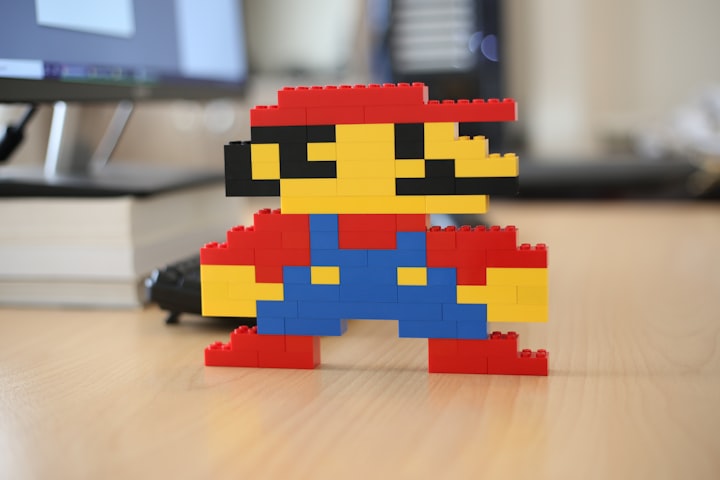Let Kids Play Videogames!
How gamification will help fight inequality

Previously, being creative was associated with either crazy (the mad scientist), money, or insane brilliance. But this doesn't appear to be the case any longer, does it? It's also not a particularly democratic approach to process and invention.
If we keep thinking this way, the only thing that will rise is inequity. Especially in this scenario, when it comes to access. To put it another way, having a fixed mindset, believing that only a chosen few can drive development, will only keep the rest of the people on the periphery of innovation.
What is the significance of this? We'll get to it as quickly as possible. But first, let's take a look at the instrument that I believe can help to transform the inequitable status of education and innovation: gamification.
Gamification is the process of infusing anything with games or game-like aspects in order to increase engagement. To put it another way, gamification is a systematic endeavour to improve systems, services, organisations, and activities in order to generate experiences similar to those found in video games. This usually is found to encourage and engage consumers/users/students. This is usually achieved by applying game design features and game concepts to non-game situations.
Games are not a waste of time; they may lead to something deeper and more significant than many of us can imagine. Games encourage contextual learning. Playing games is often the first way for kids to try out higher-order thinking abilities including generating, assessing, analysing, and applying new information.
Game features such as narrative, problem-solving, visuals, rules, teamwork, rivalry, rewards, and learning via trial and error have already been widely implemented in non-game scenarios (products, marketing, work). Some gamification is being applied in the classroom already: Kahoot!, Classcraft, Class Dojo, and Rezzly are a few examples.

Changing schools for more equal opportunities
Teaching kids that to fail is not only ok, but a normal stepping stone to ultimate success/learning, is what is at the very core of gamification for education. Heck, at the very core of videogames!
Growth mindsets might be the most significant educational idea in the last two decades. In other words, pupils who feel that abilities and intellect can be improved via deliberate work rather than depending on inborn talent do better academically. They seek out challenge, regard losses as chances rather than obstacles, and are more concerned with learning than appearances. Growth mindset is fostered in gamification.
This is especially important for minorities and neurodiverse kids.
These students frequently negotiate White, middle-class campuses, where they are subjected to microaggressions that suggest they are less competent of college-level academics than their peers. A stereotype suggests an unchangeable flaw — and a fixed mindset — whether it is attributable to intelligence or upbringing.
Failures take on a different meaning for kids of colour as a result. Students of colour sometimes shun challenges for fear of reinforcing stereotypes if they aim too high and fail. Rather than learning, they become focused on defying preconceptions, not asking questions or requesting help.
That’s why gamification and growth mindset have been shown to improve minority groups’ academic results. Because it does not comply with the rigid-fixed mindset western community has followed for too long, often producing barriers to people with less social or economical privilege.

After that, let’s talk about something that is very personal to me. While I have not been diagnosed with ADHD, I have been certain that I do not learn at the same rate — or in the same manner — as others. Intrinsic motivation can be challenging for those with ADHD, and it can be hard to find extrinsic rewards when things just, well, are not rewarding. This especially for folks with ADHD, may be owing to the fact that dopamine is administered differently in the ADHD brain.
Research is starting to show that Gamification may make life with ADHD simpler when it comes to learning. How? By giving the boost of external incentive required to get things done. And again, by making failing ok. Trying again ok. Having your own pace ok.
What about getting kids (girls) into STEM?
“Without women actively contributing to what’s built, we’ve seen that technology can be coded in a way that includes racial and gender bias.” — Priyanka Chopra, tech investor & actress
As Priyanka said better than I could ever, technology can be coded in a way that includes racial and gender bias. Especially when women are not contributing to the coding, the brainstorming, the projecting.
STEM-related employment are among the fastest-growing, with an estimated 90% of future jobs requiring information and communication technology (ICT) capabilities.
Attracting female talent to STEM professions, on the other hand, is difficult. Consider stereotypes, prejudices (both internal and external), and the fear of failure.
Luckily, things are starting to change, and bringing gamification to education is playing a big role.
Many examples can be seen around the world. For instance, in Hong Kong, the Girl Go Tech Program has been shown to successfully leverage gamification as a bridge for females in tech.

So how about it? Not only do we let kids learn by playing, but we also start teaching them by playing?
About the Creator
Reader insights
Outstanding
Excellent work. Looking forward to reading more!
Top insights
Heartfelt and relatable
The story invoked strong personal emotions
On-point and relevant
Writing reflected the title & theme
Expert insights and opinions
Arguments were carefully researched and presented
Eye opening
Niche topic & fresh perspectives
Compelling and original writing
Creative use of language & vocab
Easy to read and follow
Well-structured & engaging content
Excellent storytelling
Original narrative & well developed characters
Masterful proofreading
Zero grammar & spelling mistakes







Comments (5)
Hi we are featuring your excellent Top Story in our Community Adventure Thread in The Vocal Social Society on Facebook and would love for you to join us there
It could be a good decision.
Right amount of computer games has a positive effect on the development of children.
This was an interesting read. I would definitely love to learn how gamification can alter different aspects of society.
“Teaching kids that to fail is not only ok, but a normal stepping stone to ultimate success/learning, is what is at the very core of gamification for education. Heck, at the very core of videogames!” Well written. As a whole, I truly enjoyed reading this as I have similar feelings, and can relate on a personal level.